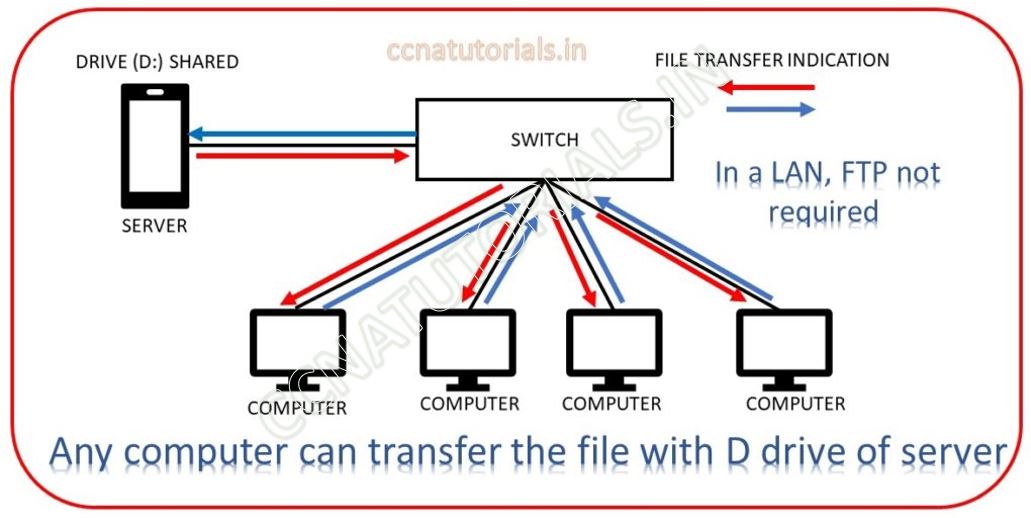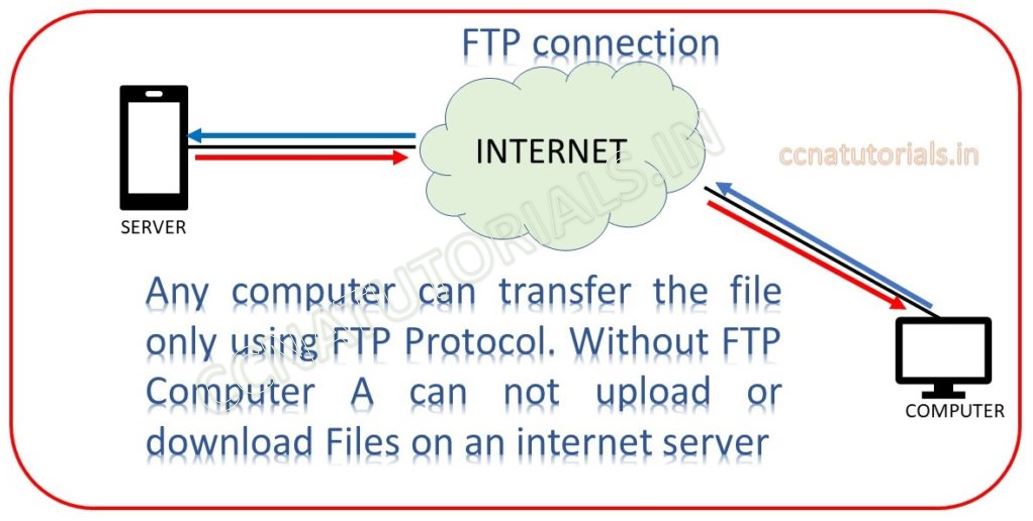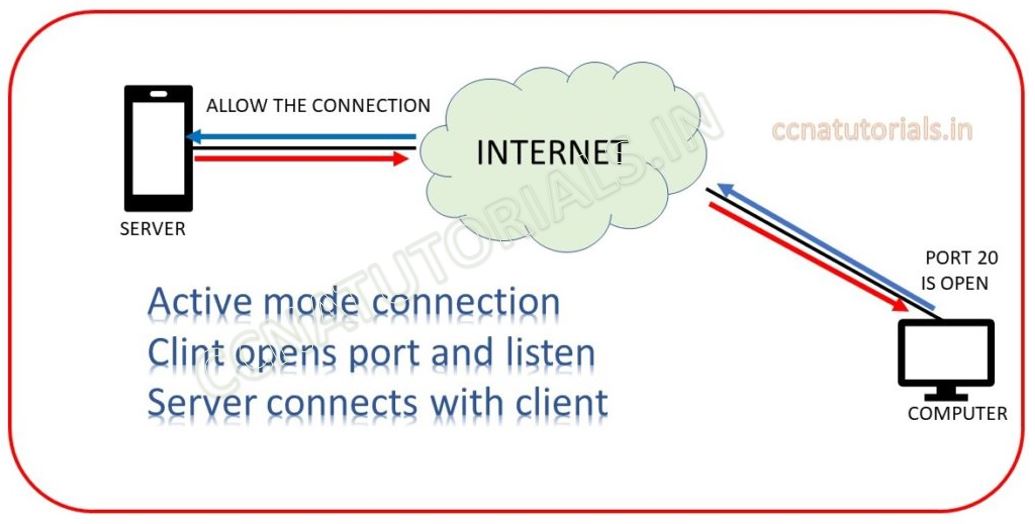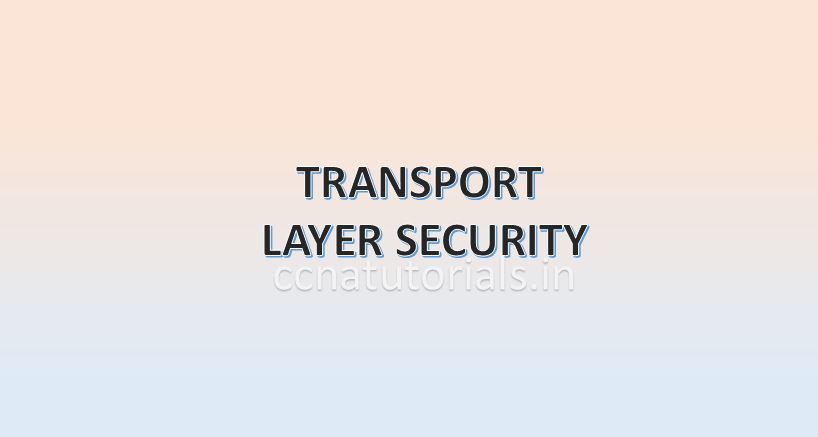Contents of this article
In this article I describe the FTP File Transfer Protocol in computer network for CCNA exam. The FTP File Transfer Protocol is related to application layer of TCP/IP Suite model. The FTP File Transfer Protocol allowed to upload and download the physical files in a server available in network. FTP File Transfer Protocol is very useful to keep the physical files in a particular server in the network. A user can upload and download the files from a computer in the network. FTP File Transfer Protocol is an application layer protocol in TCP/IP suite model. So it may be beneficial to know about the layered approach in the OSI and TCP/IP suite model.
Before going to learn about FTP File Transfer Protocol we need to remember the OSI suite and TCP/IP suite model. There are many manufacturer of computer machine in the market. Initially when computers became single user public computer. The computers communicate with only same brand machines. It happens because there was no any fix standard for data transfer between different devices. It is very difficult to make communication with each other when the hardware are of different brands or company. In this article I describe the some basic part of OSI reference layer and TCP/IP Suite model basic concepts in networking with FTP File Transfer Protocol.
OSI reference model in computer network followed by various vendors to overcome the compatibility problem. After implementation of OSI reference model in computer network, equality maintains by all manufacturer. In 1970 the Open Systems Interconnection (OSI) reference model was created by the International Organization for Standardization (ISO). The OSI model was meant to create inter-operable network with different manufactured devices. In this article I describe some layered approach of TCP/IP Suite model basic concepts in computer network. Before understanding the TCP/IP Suite model basic concepts it is necessary to know about the 7 layers of OSI reference model because the basic work of each layer is described in the OSI reference model. You can read the full article related to OSI reference model in computer networking here.
Importance of OSI reference model
Before going to know about the FTP File Transfer Protocol. It is necessary to know the function of application layer in OSI model and TCP/IP model. Initially not only hardware but software also not supported for work the different computer brand. It became very difficult for all computer users to working without implementation of OSI reference model in computer network. It is necessary then to make some common protocols for all vendors of computer. Before implementation of OSI reference model in computer network, all vendors implements their own protocols on computer hardware and software.
In networking OSI reference model became helpful. OSI reference model describes the flow of data between nodes in any network. Data from one computer application to another computer application transfer by following some common protocols. The OSI reference layer also become beneficial for troubleshooting the network problems. TCP/IP and Cisco three layered hierarchical model of Cisco became more helpful alongside the OSI reference model.
The Layered Approach in computer network for FTP File Transfer Protocol.
The Layered approach was the best way to make equality for all computer devices. Layers are not physical but following some protocols. Protocols are for connectivity, connections, data transfer and more. All manufacturer begin to follow the layered approach for OSI reference model in computer network. The OSI reference model change in TCP/IP reference model and later on Cisco three layered hierarchical model. OSI layer architecture have 7 layers. TCP/IP reference model convert these 7 layers into only four layers. After that Cisco three layered hierarchical model converts these 7 layers into three layers. Some layers combined to work in a single layer.
OSI is acronym for open system interconnection. The OSI is a logical reference OSI reference model in computer network. OSI model helps for data flow between different devices and operating systems. All manufacturer used their own architecture before invention of OSI reference model. It was very difficult to establish data communication between different devices. To overcome this problem international organization for standardization (ISO) created the open systems interconnection (OSI) reference model. OSI reference model make data flow possible between different operating system, devices and hardware. Later the OSI model adopted by Cisco as Cisco three layered hierarchical model.
Structure of OSI reference model
OSI reference model in computer network consist of 7 layers. These 7 layers further divided into two groups. First 3 layers works for application communication and remaining 4 layers works for data flow. Application, presentation and session layers define the application communication. Transport, network, data link and physical layers define the data flow. Networking protocols works only on last four layers.
TCP/IP Suite model basic concepts
TCP/IP is acronym for Transmission Control Protocol/Internet Protocol (TCP/IP suite model). In this section of the article I describe about TCP/IP suite model basic concepts in detail. TCP/IP suite model is a reference model like OSI layers. Instead of 7 layers of OSI reference model. TCP/IP suite model consist only four layer. All seven layers are merged into four layers only. TCP/IP suite model was designed and implemented by Department of Defence (DoD). TCP/IP developed to preserve data integrity. The main purpose to develop the TCP/IP is to provide security in the network. A lots of protocols works on each layer to provide a secure network.
It is necessary to understood the protocols used in TCP/IP Suite model basic concepts. IP addressing play an important role in TCP/IP Suite model basic concepts. By using the IP address and subnet masking broadcast domain breaks. It will improve the performance of the network. Breaking broadcast domain increase the data flow speed. Here IP stands for IPV4 only. We ignore the IPV6 for some time in this article. It will make it easy to understand the TCP/IP Suite model basic concepts.
A snap of TCP/IP Suite model basic concepts
In the decade of 1970’s TCP/IP suite model developed by DoD. In the initial stage TCP/IP suite model divided into two segments TCP and IP. Later its name registered with combined name of TCP and IP like TCP/IP model. ARPA, the Advanced Research Projects Agency of DoD officially authorised to use TCP/IP suite model. TCP/IP model was working well so it was adopted by many organisations. In today scenario it is mostly using reference model for networking. Internet is the best example of using TCP/IP.

Basic Idea of Layers of TCP/IP Suite model
There are four layers in DoD model. As shown in above image. Top 3 layers of OSI combined and create the Process/Application layer. Transport layer remain Transport layer. Network layer become internet layer and last two layer combined and called link layer. You can see both model are similar in concept.
Process or Application layer of DoD model in TCP/IP Suite model
This is the first layer of TCP/IP of DoD model. It is combination of top three layers of OSI reference model. The functions of Application layer, presentation layer and session layer in OSI model works in single layer process layer. This layer supports the point to point communication and controls the user interface. The data encryption and decryption also done at this layer. Example of some protocols functions at this layer are Telnet, FTP, LPD, TFTP, SMTP.
Transport layer of DoD model in TCP/IP Suite model
Transport layer of TCP/IP is same as the Transport layer of OSI reference model. It supports the TCP and UDP protocol. This protocol converts the main data segment into packets and transport to the internet layer. The responsibility of Transport layer is to combine the segments and built the data. The data should be reconstruct in its real form. Transport layer is also responsible for creating end-to-end communication between sender and receiver. This layer ensure the delivery of segment in sequence at the receiving device. This property maintains the data integrity.
Internet layer of DoD model in TCP/IP Suite model
Internet layer of TCP/IP is similar to the network layer of OSI reference model. Routing protocols functions on Internet layer of TCP/IP model. Addressing and filtering of packets is main responsibility of Internet layer of TCP/IP model. This layer provides the transmission of packet in the whole network. Some example of protocols functions on internet layer are ICMP, ARP and IP.
Link layer of DoD model in TCP/IP Suite model
Link layer is the least layer of TCP/IP. Basically link layer is combination of data link and physical layer of OSI reference model. Link layer is also known as Network Access layer. It works on MAC address based data transmission. Link layer handles the frame and bits. It receive the bits and constructs frame from merging bits in a sequence. In case of any bit is missing this layer request to re transmit the bits. Ethernet, FDDI, WAP etc functions on this layer. There is no any preset specification for link layer. Link layer functions on any type of existing media.
FTP File Transfer Protocol
FTP File Transfer Protocol is important protocol for storing and retrieving the data files from a FTP server in the network. The FTP File Transfer Protocol is used for transferring the file between computers and servers in a network. Downloading a file from internet is an example of FTP File Transfer Protocol. The FTP File Transfer Protocol mostly used for transferring the website data to web server from any local host. Updating a website become so easy by using FTP File Transfer Protocol from a far away computer. FTP allows to transfer files between two computers if both are connected to internet. FTP File Transfer Protocol has no limits for type of file, the file may be office document, music and video etc.

File transfer in a LAN can be done by sharing a drive in the network. FTP is used to transfer the files between different LAN or internet. Operating system is no bar for using FTP over internet as all operating system supports the FTP File Transfer Protocol.

In above two pictures you can see the file can transferred without FTP within a Local Area Network. If you want to transfer the file with a far away computer then FTP File Transfer Protocol is helpful to use on internet.
How FTP File Transfer Protocol works?
FTP File Transfer Protocol works with a FTP client software. There are many FTP client software available for various operating system. Some examples of FTP client are FileZilla, Core FTP, CuteFTP etc. FTP client requires the IP address of hosting server, user name and password to make connection. Once FTP connection established, client can upload and download the files in local system.
FTP file transfer protocol uses TCP protocol to transfer files. FTP not works on UDP protocol because in UDP protocol if any packet of file corrupt whole file will be useless. TCP protocol always takes acknowledgement of all data transferred correctly or not. If packet loss, then same file transmitted again to recover the lost data. FTP client provide security against virus and malware. FTP clients are user friendly simple menu and icons are available to use the software.
FTP File Transfer Protocol connections with internet
FTP requires two connections on internet for transfer the files. One connection is for command and another one is for data. These two connections established on fix port numbers. Port numbers are logical connection using the Internet Protocol(IP). Port number 20 used for data transfer and port 21 used for commands.
Active and Passive Connection Mode of File Transfer Protocol
FTP may run in active or passive mode. Active and passive mode determines how the data connection established.

In active connection mode the FTP client opens a port and server connects to it.

In passive connection mode the server opens a port and the client connects to it. The FTP client software creates the active or passive connection accordingly. FTP is mostly use SSL/TLS for security of data.
Data transfer modes in FTP protocol
There are three data transfer modes used by FTP File Transfer Protocol, Stream mode, block mode and compressed mode. In stream mode data transferred continuously in a stream. All processing done on TCP connection between the server and the client. After completion of data transfer the connection lost automatically. In Block mode the data breaks into several blocks and transmitted using TCP protocol. In compressed mode data transferred after compressing. The compression done by simple algorithm. At the end of receiver, the data is decompress by same logarithm which was used for compression.
Security provided by FTP protocol
FTP was not design to be a secure protocol. There are many security breaches like brute force attach, packet capture, spoofing attack etc. FTP doesn’t encrypt the data during transmission. The FTP applications uses the secure connection for uploading and downloading the files from the FTP server. You need to configure the FTP server as per your requirement. The requirements are mainly the storage space.
In this article I describe the FTP File Transfer Protocol for CCNA Exam. I hope you found this article helpful. For any query or suggestion you may drop a comment below or contact us. Your suggestions are always welcome by us.







I am regular reader, how are you everybody?
This post posted at this web page is actually fastidious.